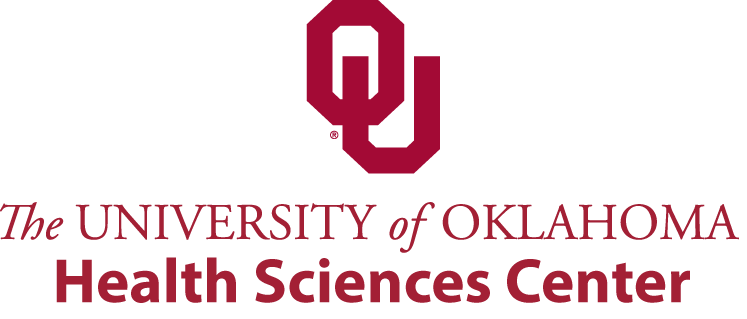

A mini-symposium is being planned at the OU-Norman to bring together Bioinformatics and Computational Biology researchers from both the OU-Norman and OUHSC campuses. This mini-symposium aims to establish collaborations between OU-Norman researchers performing Omics analyses with bioinformatics researchers at OUHSC so that together we can build a highly skilled workforce for Omics data analyses, including single-cell RNA sequencing and spatial transcriptomics. At the symposium, we will highlight current work in the single-cell Omics field at both campuses and provide an overview of how high-end computational approaches to Omics could further biomedical research projects on both campuses. Overall, we aim to foster collaboration in research and education, increase the understanding of state-of-the-art Omics tools and techniques, and explore avenues for increasing our bioinformatics and computationally skilled workforce to support Bioinformatics/Computational Biology analyses on the OU-Norman and OUHSC campuses.
Registration is closed.



Dr Diogo Camacho is the VP of Computational Biology at Cellarity. Diogo holds a Bachelors in Biochemistry from the University of Lisbon, Portugal, and a PhD in Computational Systems Biology from Virginia Tech. Diogo did his post-doctoral training at Boston University working with Dr. Jim Collins on applying network inference methods to problems in bacterial response to antibiotics. Following his post-doc, Diogo worked in large pharmaceuticals and small startups in the Boston area, before returning to academia to lead the Predictive Bioanalytics group at the Wyss Institute of Harvard and MIT. Diogo then left the Wyss to go back to industry, leading teams on the application of machine learning methodologies to drug discovery.

Dr. Khatri is an Associate Professor in the Institute for Immunity, Transplantation and Infection and Division of Biomedical Informatics Research in the Departments of Medicine and Biomedical Data Science at Stanford University. His research focuses on developing machine learning methods for leveraging biological, clinical, and technical heterogeneity across independent publicly available heterogeneous data to accelerate clinical translation. His lab has applied these methods for identification of disease signatures that are diagnostic, prognostic, therapeutic and mechanistic across a broad spectrum of diseases including infections, autoimmune diseases, cancer, organ transplant, and vaccination.

9:15 am – 9:45 am
Predictive genomics aims to estimate the polygenic risk scores (PRS) of subjects for complex diseases based on their personal genomes. Traditionally, statistical models are constructed to estimate the PRS of a disease based on a number of assumptions, such as linearity, independence, and normality. A new architecture, called Linearizing Neural Network Architecture (LINA), was developed for predictive genomics. We showed that deep LINA models can provide more accurate prediction than statistical models for estimation of breast cancer PRS. First-order and second-order interpretation of the neural network models extracted many important single-nucleotide polymorphisms (SNPs) and epistatic interactions, which were not discovered previously. Furthermore, multi-task learning was used to predict multiple diseases for subjects from their personal genomes. Multi-task learning was found to provide more accurate PRS estimation for many diseases than single-task learning for individual diseases. This shows positive transfer learning among different diseases for PRS estimation.
9:45 am – 10:15 am
Drivers of childhood obesity begin during development, established in part by fatty acids (FA) transmitted to the neonate. Adipocytes can specialize in nutrient storage (white) or burning (beige). Both adipocyte types are derived from a common stem-like Adipocyte Precursor Cell (APC), that responds to FA signals to affect white or beige adipocyte differentiation. My lab investigates how neonatal omega-6 to omega-3 FA ratio (“n6/n3 FA ratio”) exposures impact APC fate, including adipogenic potential, APC metabolism, and the metabolic persistence into mature adipocytes that APCs spawn. Our recent bulk and single cell RNA sequencing findings identified nuclear receptor NR2F2 as a potential regulator of neonatal adipocyte cell fate, and therefore a possible mediator of metabolic programing by the n6/n3 FA ratio. We discovered that low n6/n3 FA ratio exposed neonates have APCs with greater NR2F2 mRNA/protein, FA oxidation, beige adipocyte markers, and DNA-methylation consistent with beige genes. We hypothesize that low n6/n3 FA ratio neonatal exposure establishes Nr2f2-facilitated beige adipocyte gene expression, tipping the adipogenic balance towards beiging, resulting in persistent metabolic activation in adipocytes. We applied the 10x Genomics single cell sequencing platform and customized Rstudio workflows to understand how the neonatal fat pad develops in response to n6/n3 FA ratio exposures in vivo.
10:30 am – 11:00 am
The revolution in sequencing technology demands new tools to interpret the genetic code. As in vivo transcriptome-wide chemical probing techniques advance, new challenges emerge in the RNA folding problem. The emphasis on one sequence folding into a single minimum free energy structure is fading as a new focus develops on generating RNA structural ensembles and identifying functional structural features in ensembles. Direct RNA sequencing with Oxford Nanopore Technology provides a new window on epitranscriptomics and single molecule chemical probing. This project focuses on progress in viral RNA structure and prediction, looking toward solving the RNA folding problem to predict RNA function and antibiotic target sites from sequence.
11:00 am – 11:30 am
Almost a third of human protein-coding genes still have no known function. If non-coding RNAs are included, that brings the total to slightly over half of human transcripts. Genetics is central in understanding the molecular factors underlying disease and development, and this represents a huge gap in our scientific knowledge. Model systems and modern technology make it simple to knock genes out or down and are not the rate-limiting factor. Rather, it is knowing what phenotype to look for after such experimental manipulations. Using transcriptional networks, we have developed a bioinformatics method that is 85% accurate in wet-lab tests at predicting gene knockout/knockdown phenotype.
11:30 am – 12:00 pm
Aging has been shown to change the intestinal stem cell number, cell composition and increase the absorptive surface of the intestine. Dietary restriction (DR) an anti-aging intervention has been shown to prevent the age-related changes in the intestinal stem cell numbers and reduce the absorptive surface of the intestine. We compared the effects of DR on the microbiome, fecal metabolome and mucosal transcriptome in the intestine of old mice. We found that DR increased microbial diversity and prevented the age-related changes in microbiota. DR shifted the microbiota and metabolite profile of older mice to a younger phenotype. On the other hand short-term DR in young mice had only minor effect on the microbiome but showed significant changes in the transcriptome of the intestinal mucosa. Our data suggest that DR has major impact on the physiological status of the gastrointestinal system, maintaining it in a more youthful state, which in turn could result in a more diverse and youthful microbiome.


